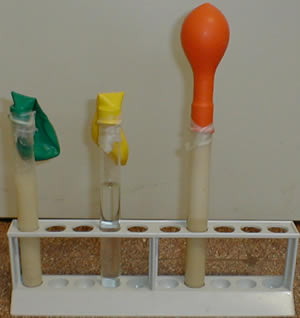On Friday, students made wet mount slides using yeast cultures. Below is what yeast cells look like on medium power (100x) on our microscopes.

At the end of the mini lab, we review why yeast is a living thing. Yeast is alive because:
1. it is made up of cells
2. it grows and divides
3. it responds to its environment
4. it uses energy
5. it reproduces (asexually, by budding)
and lastly
6. it evolves.
In our experiment, we were able to see #1-5 on the list, but watching evolution is more challenging. As Jose correctly said in class, evolution takes a long time!
Our next unit, starting on Monday, will be on DNA, the code of life. It is changes to DNA that are the basis for all evolution!
Since you had a lab report due on Friday, you do not have homework due Monday. Have a great weekend!
 Today in class we learned about the structure of DNA.
Today in class we learned about the structure of DNA.











